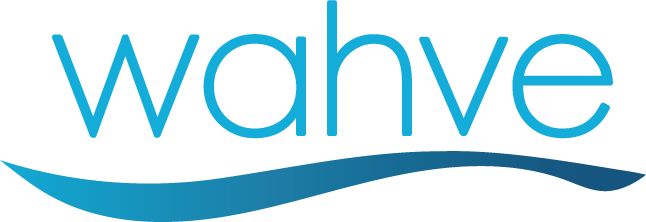In a profession where risk is constantly evolving and regulatory scrutiny is intensifying, the development of capable, future-ready leadership is no longer optional—it is essential. The insurance sector is undergoing structural change: digital transformation, shifting workforce demographics, and increased demand for client-centric service models are redefining what leadership looks like.
Amid these pressures, mentorship has become one of the most valuable levers organizations can use to preserve institutional knowledge, accelerate professional development, and prepare high-potential talent to lead with both strategic insight and operational precision.
The Leadership Gap: A Growing Concern
Across the insurance sector, there is growing concern about a widening leadership gap. The Insurance Institute of Canada reports that nearly one-quarter of insurance professionals are set to retire within the next five years. Meanwhile, younger professionals face a steep learning curve as they enter a landscape shaped by AI-driven tools, climate-related risk models, and client expectations that extend far beyond transactional service.
Without deliberate mentorship, critical experience and nuanced judgment—things that cannot be taught in a course or absorbed from a manual—risk being lost. Mentorship is the bridge between technical training and executive capability.
What Makes a Great Mentor in Insurance
In a technical industry built on interpretation, compliance, and trust, mentorship must be more than surface-level support. Effective mentors are practitioners who bring operational fluency and a willingness to share both their successes and missteps.
1. Contextualize Complexity
Insurance is full of grey areas—policy interpretation, evolving regulation, ethical considerations. Mentors help mentees move beyond textbook knowledge to understand how decisions play out in real business contexts.
2. Model Decision-Making
Rather than offering answers, strong mentors walk mentees through their thinking process: how they assess risk, weigh client impact, or balance competing business priorities.
3. Promote Strategic Perspective
Leadership in this industry demands more than technical competence. Mentors should prompt big-picture thinking—how underwriting decisions affect profitability, how claims handling influences retention, how regulatory trends might shift product design.
How Mentorship Should Be Delivered in Today’s Insurance Workplace
Mentorship today must be as adaptable as the workforce it serves. Remote work, flexible teams, and cross-functional projects require a modernized approach that blends structure with flexibility.
1. Create Tiered Mentorship Models
One size rarely fits all. Consider a layered model:
- Peer mentorship for new hires during onboarding
- Career development mentorship focused on skill building and goal-setting
- Executive mentorship to prepare emerging leaders for succession and strategy
Each tier should have defined outcomes, but room for informal rapport to develop organically.
2. Integrate Mentorship into Performance Development
Mentorship should not exist in isolation. Align it with broader talent development initiatives by incorporating mentorship goals into performance reviews, succession planning, and leadership pipeline metrics. If possible, pair mentorship with sponsorship—where senior leaders advocate for mentees’ visibility and growth opportunities within the organization.
3. Use Structured Frameworks, Not Scripts
Effective mentorship benefits from structure but not rigidity. Suggested frameworks can include:
- Monthly 1:1s with agenda themes (e.g., ethical dilemmas, client management, leadership mindset)
- Case-study walkthroughs of past business challenges
- Shadowing sessions (virtual or in-person) for key meetings or client calls
- A quarterly development plan co-created by mentor and mentee
4. Leverage Hybrid Tools for Accessibility
In hybrid and remote work environments, mentoring relationships must evolve. Use tools like:
- Video conferencing for regular meetings
- Shared documents or mentorship journals for ongoing dialogue
- Learning management systems (LMS) to track development plans and goals
Virtual mentorship should not be seen as a downgrade—it offers flexibility and reach, particularly for multi-office organizations or those with phased retirees.
5. Facilitate Reverse Mentoring
Younger professionals often bring strengths in digital literacy, new communication styles, and emerging risk knowledge (e.g., cyber or ESG). Reverse mentorship models allow seasoned professionals to benefit from the perspectives of newer entrants, creating a two-way exchange that strengthens organizational agility and mutual respect.
Addressing Challenges in Mentorship
Mentorship initiatives often stall because of:
- Lack of time and bandwidth from senior staff
- Undefined expectations
- Poor matching between mentor and mentee
- Focus on short-term tasks rather than long-term development
To overcome these challenges, mentorship must be positioned as a leadership responsibility, not an extracurricular activity. Leaders should be coached on how to mentor effectively and recognized for their impact on talent development.
What Tomorrow’s Insurance Leaders Need
Today’s emerging professionals are navigating an environment that is more complex, connected, and client-driven than ever. They seek:
- Clarity in career pathways
- Purposeful leadership that aligns with their values
- Ongoing feedback from mentors who are engaged and transparent
They are not simply looking for instruction—they are looking for guidance that accelerates their development while allowing them to bring their own voice and perspective into leadership.
Final Thoughts
The business case for mentorship is clear. It is a deliberate investment in leadership continuity, organizational agility, and long-term industry competence. As carriers, brokerages, and service providers navigate succession risk and increasingly complex talent dynamics, structured mentorship is not just beneficial—it is a critical element of any forward-thinking workforce strategy.
Developing tomorrow’s insurance leaders cannot be left to passive learning or osmosis. It requires experienced professionals to engage intentionally, transfer both technical knowledge and tacit judgment, and help shape leadership that is as adaptive as it is accountable. In a sector where reputational trust and long-term performance are everything, mentorship remains one of the few tools capable of delivering both.

0 Comments